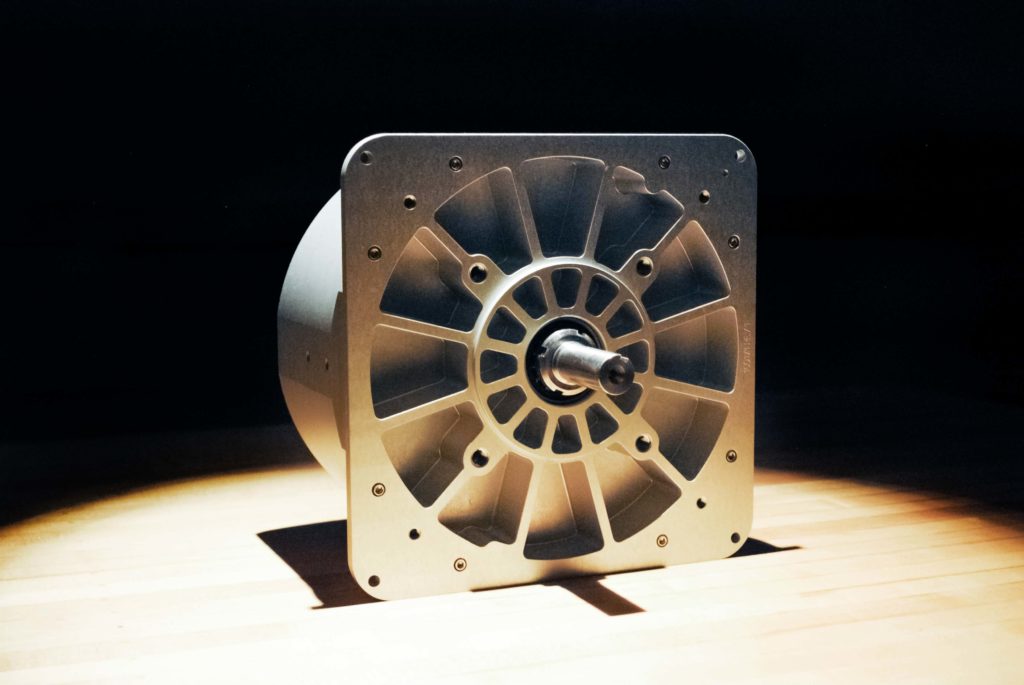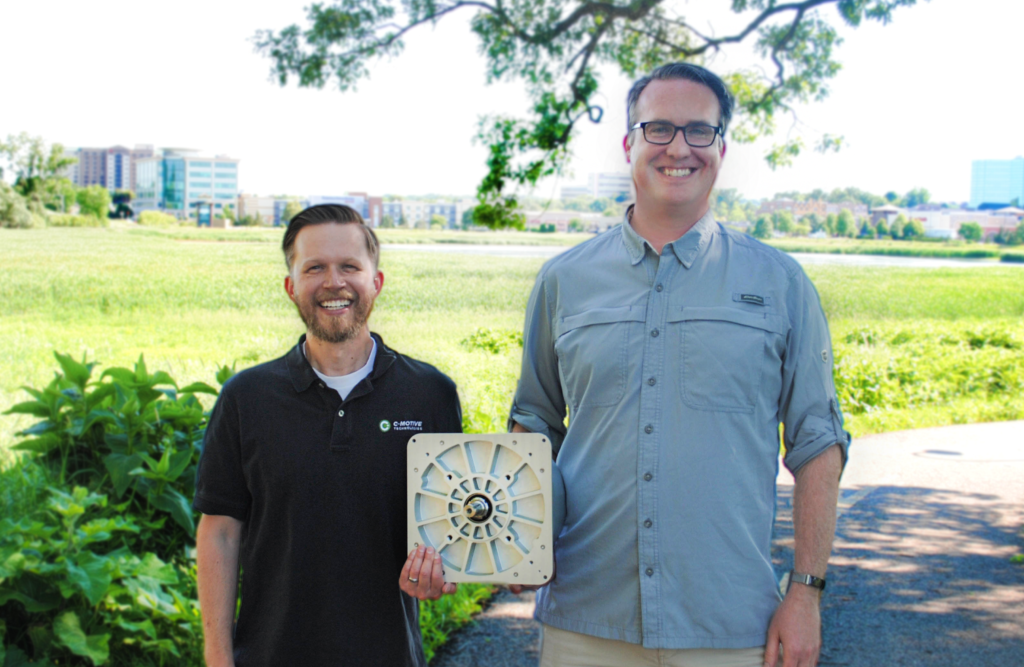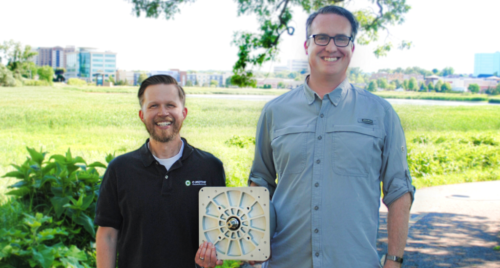Electric motors have relied on the same fundamental technology for nearly two centuries until two UW-Madison Electrical Engineering graduate students returned to one of Benjamin Franklin’s early designs.
In 2009, Dan Ludois was a UW-Madison Electrical and Computer Engineering graduate student. In the laboratory of Giri Venkataramanan, he spent his Friday afternoons attending seminars held by the Wisconsin Electric Machines and Power Electronics Consortium. He noticed a pattern in the challenges of the engineers designing electric motors and generators for a living: the motors got hot. The materials were expensive, rare-earth elements mined internationally.
Ludois spent hours thinking about electrostatics. In the second half of the 18th century, Benjamin Franklin described a motor that operated on the principle of electrostatic attraction and repulsion using metal-coated glass jars.
Wanting to return to the idea of power conversion using electric rather than magnetic fields, Ludois turned to his close friend and fellow graduate student Justin Reed. They began building models in a spare bedroom using materials found on eBay and the UW-Madison Surplus with a Purpose. In 2011, the pair began independently publishing their findings in IEEE Conferences and Transactions with their self-described “spare bedroom laboratory results.”

Photography provided by Dan Ludois
Ludois worked closely with the Wisconsin Alumni Research Foundation to patent his technology, gaining more support through WARF Accelerator. Eventually, his startup, C-Motive, received funding from WARF Ventures.
Leah Haman, a senior intellectual property manager at WARF and Industrial Engineering alumna, helps student and faculty inventors in the College of Engineering protect their innovations. Haman remains one of the first people Ludois contacts when he designs a new invention.
Haman explains, “Typically, I meet with graduate students and faculty innovators like Dan in the College of Engineering when they have disclosed something new and help manage intake.” She further clarifies, “we’re the ones also responsible for helping to evaluate whether we can get a patent. If WARF takes them on, as we did Dan, we hire an attorney and manage the application process. Our goal is to find a commercial partner, either a startup or existing company, to license the patents and develop the technologies to take them to market.”
Now, a 75-hundred-square-foot facility houses C-Motive’s mechanical development, electrical research, and chemical synthesis activities. C-Motive has a comprehensive IP portfolio covering all aspects of the machine and the machine’s drive, currently holding over 30 patents and applications in process.
According to Ludois, “C-Motive has picked up where Benjamin Franklin left off and created an electrostatic motor that also harnesses static electricity to create motion. C-Motive’s technology uses sets of rotor and stator plates made from printed circuit boards filled with a proprietary dielectric fluid. When everything comes together, this motor is highly efficient, emits no heat, and can help users meet their sustainability goals.”

Photography provided by Dan Ludois
C-Motive Technologies commercialized sustainable, high-efficiency motor technology using electrostatic principles to decarbonize stationary industrial and e-mobility applications. Unlike traditional electric machines, C-Motive’s electrostatic motor does not rely heavily on permanent magnets and copper. Limiting these materials is key to addressing supply chain concerns and critical material availability.
“Maybe it’s hubris, but I wanted to work on a startup that would be not just an improvement or an iteration of some existing motor technology, but . . . from a motivational and romantic perspective I wanted to be able to say that I was pushing something fundamentally. Eliminating the use of electromagnetism in electric machinery is something that, if you open a textbook, they say it is not possible.”
“I wanted to work on a startup that would be not just an improvement or an iteration of some existing technology, but . . . from a motivational and romantic perspective I wanted to be able to say that I was pushing something fundamentally.”
Dan Ludois
Undaunted by the challenges of existing in a area flooded by magnetic field application optimization, Ludois has a message for struggling graduate students: “When I started there were many people who told me in ineloquent ways that this would never work, that I was wasting my time, and to this day some people still say the same thing. You’ll find it doesn’t work the first time, or the tenth time, or maybe the twentieth. You have to be resilient and embrace failure as a component of innovation.”
As sustainability and supply chain goals take greater precedence in industry considerations, C-Motive is uniquely positioned as the world’s only company commercializing electrostatic motor and generator technology with a regional supply chain and reduced carbon emissions.
If you have an idea you would like to share with Leah Haman and WARF, contact her at lhaman@warf.org. WARF welcomes meetings with students to discuss their ideas.

